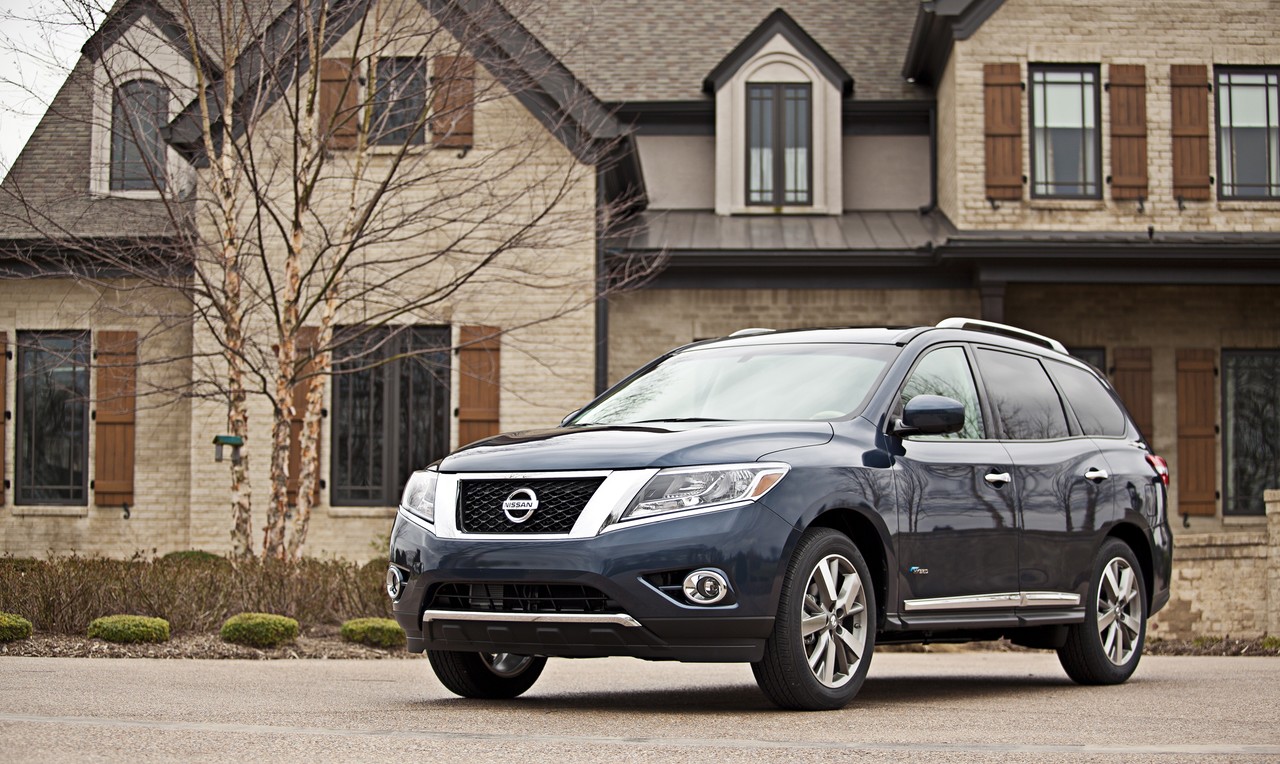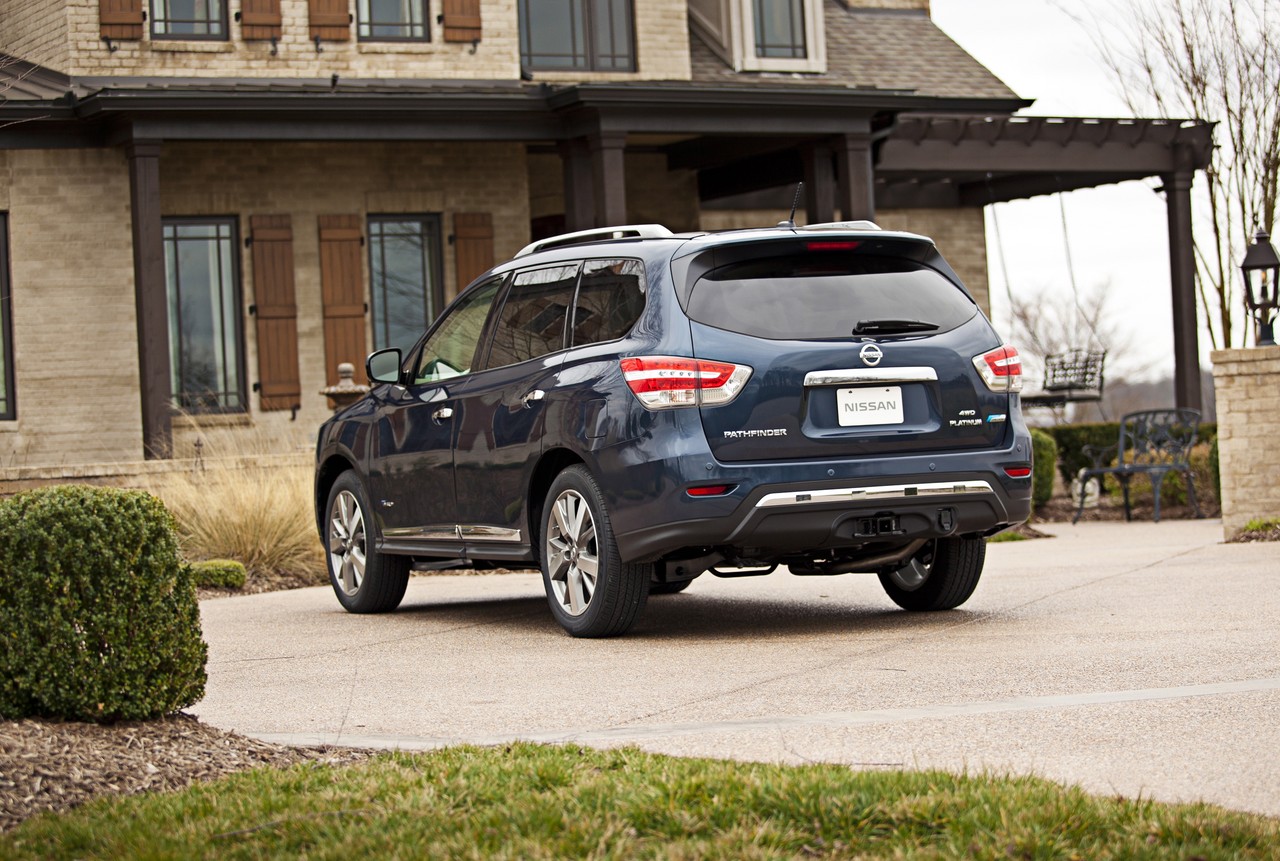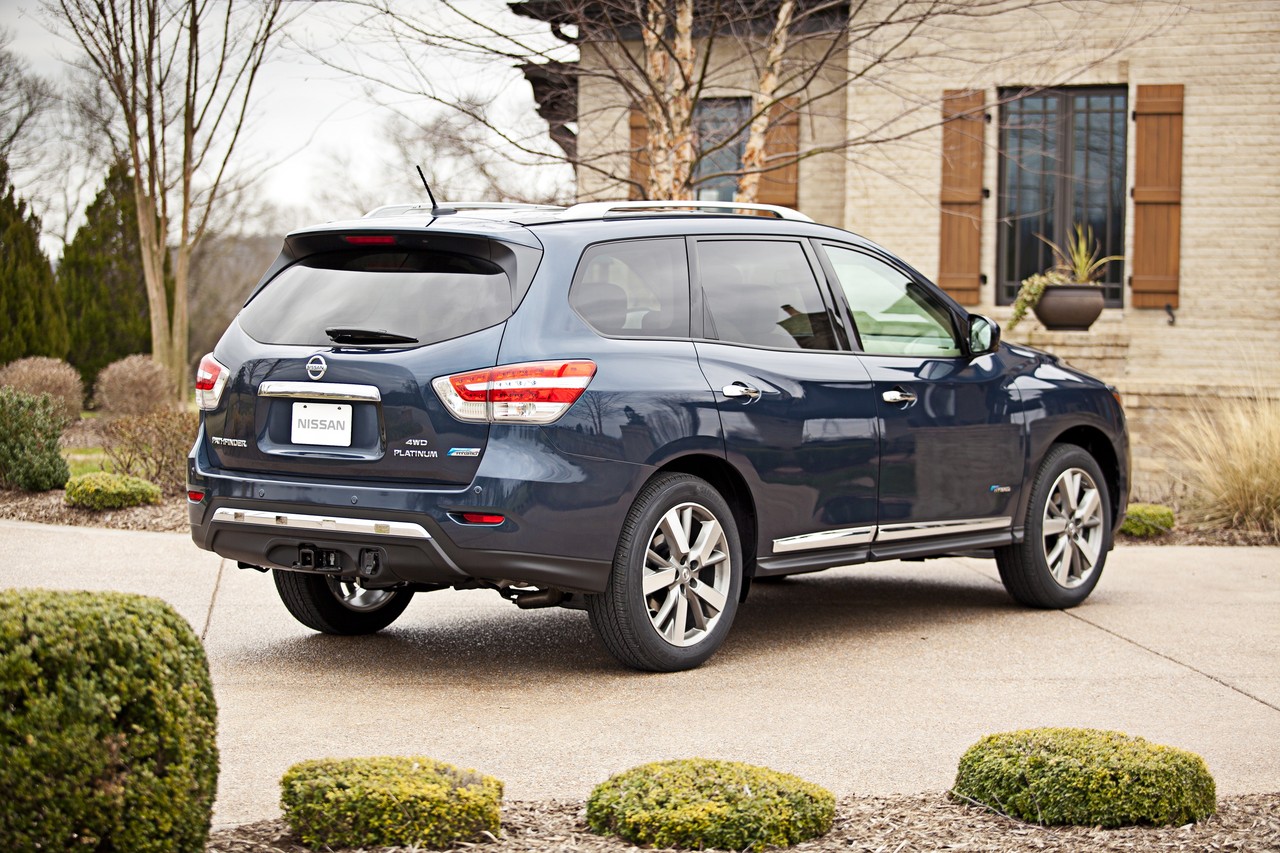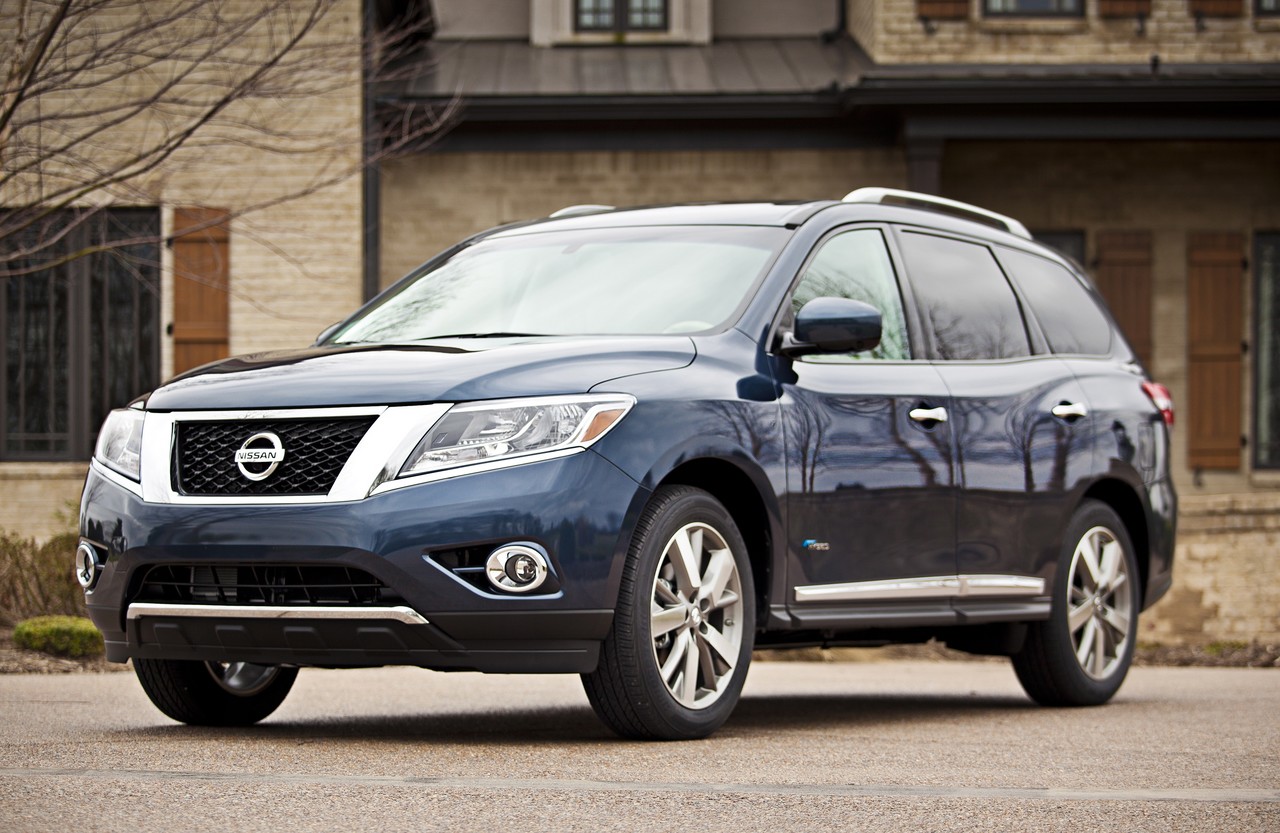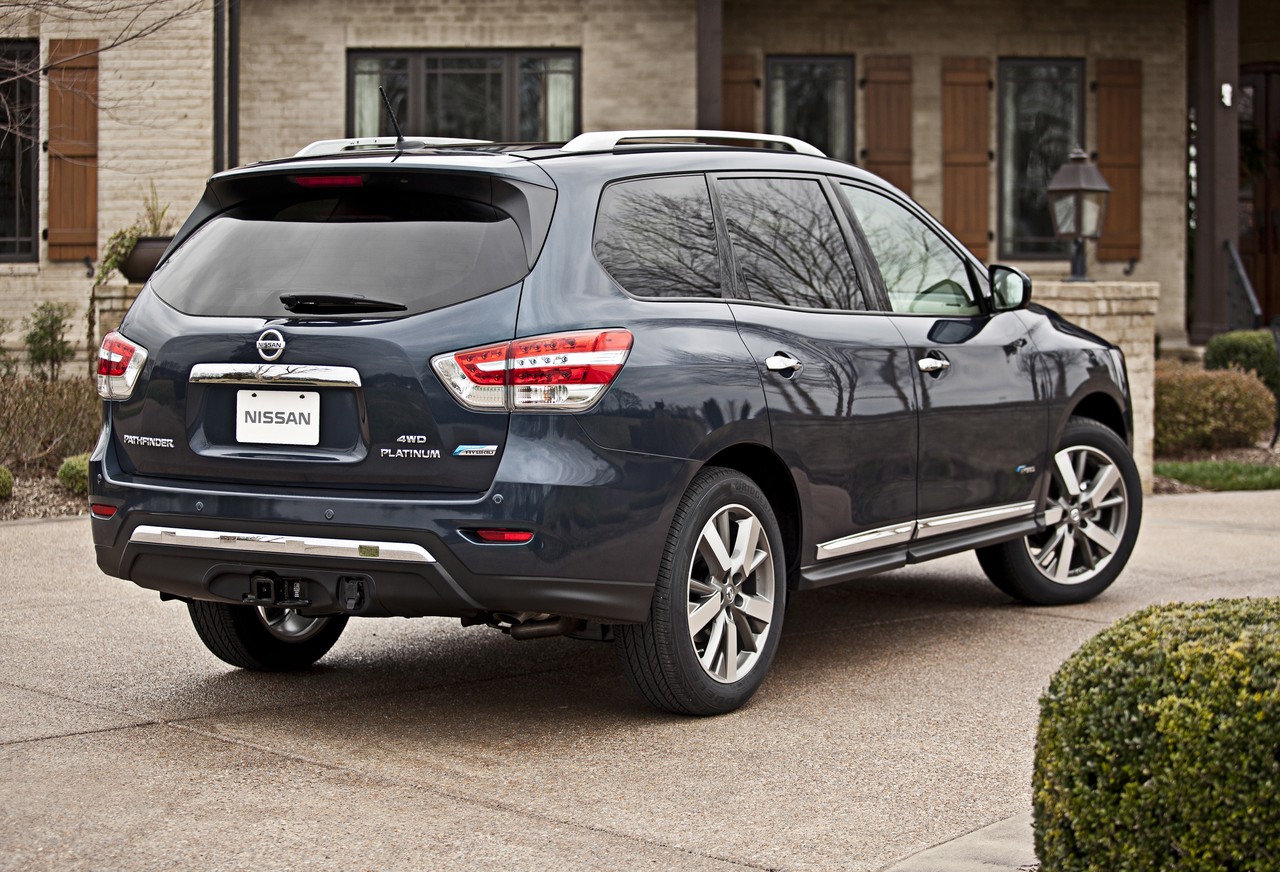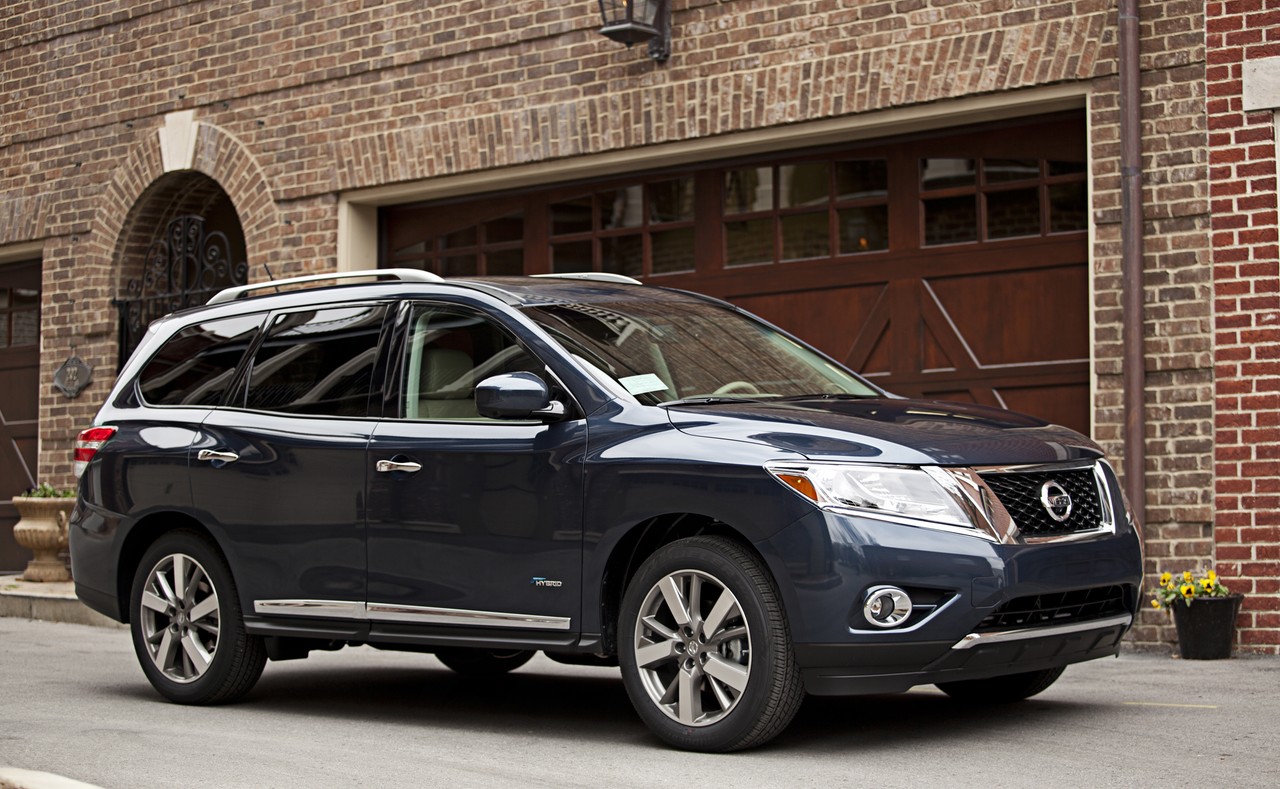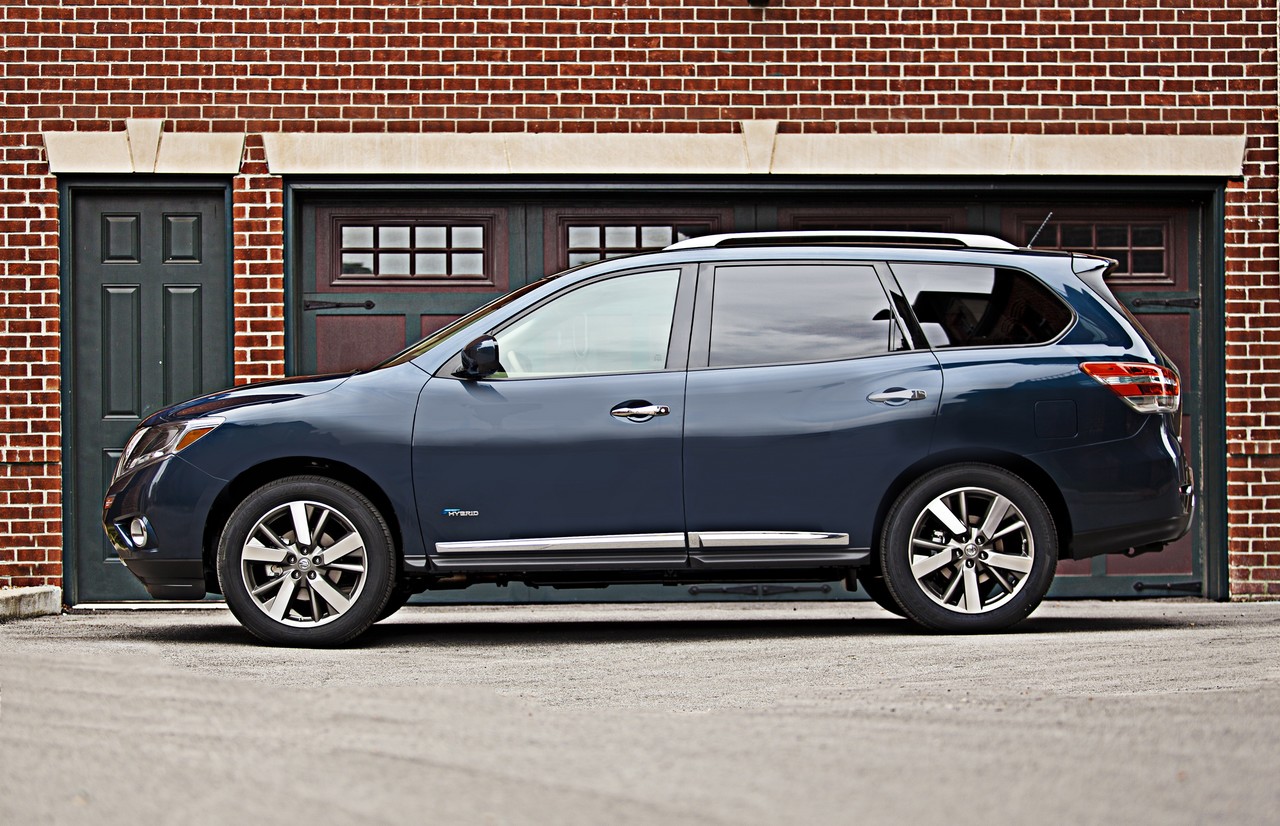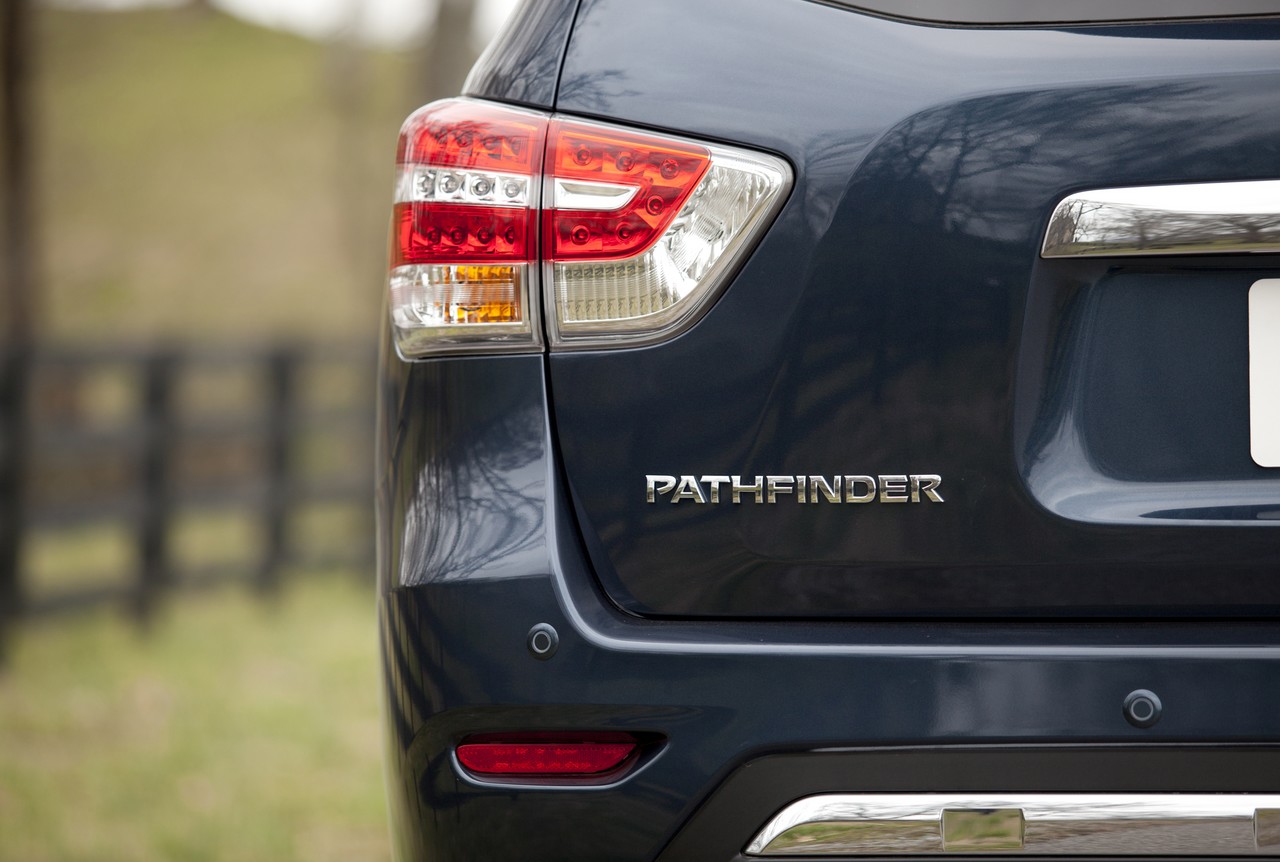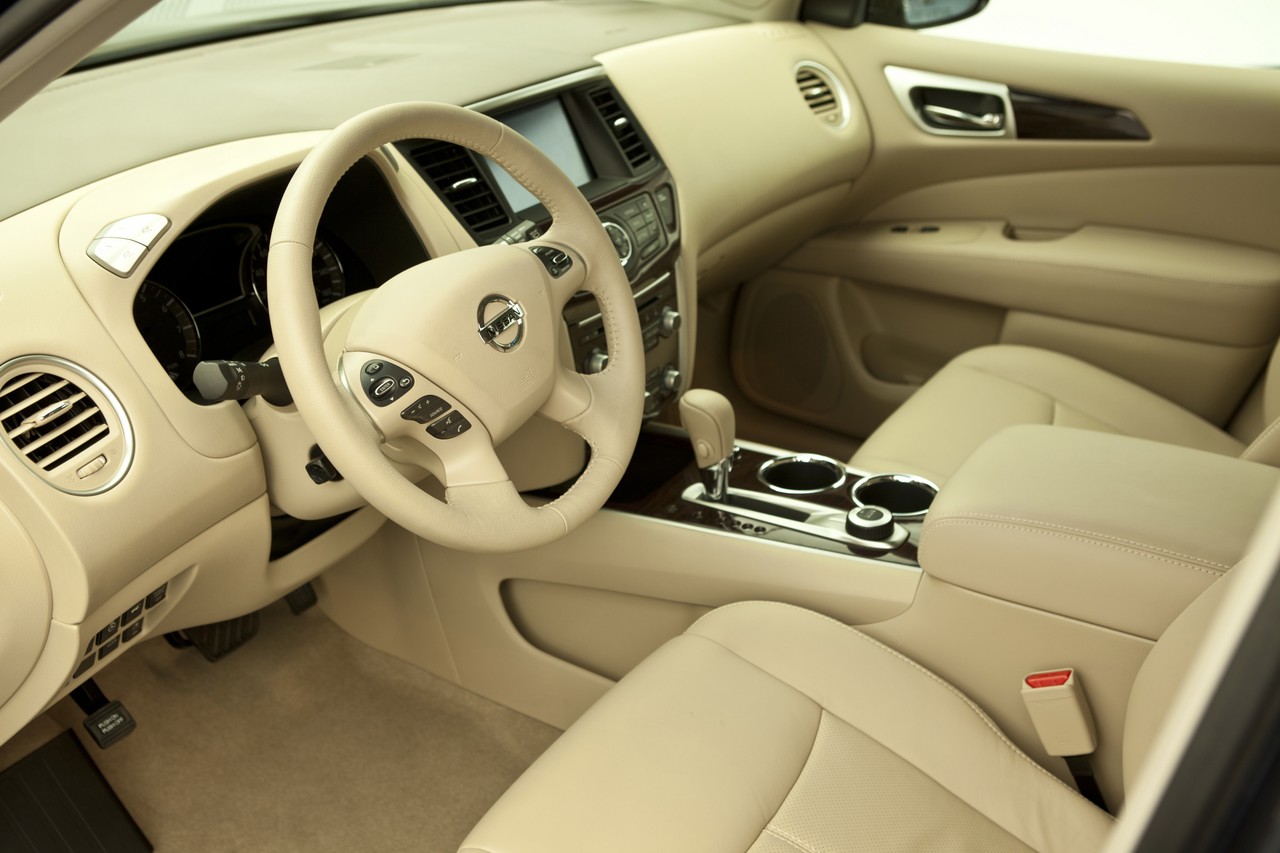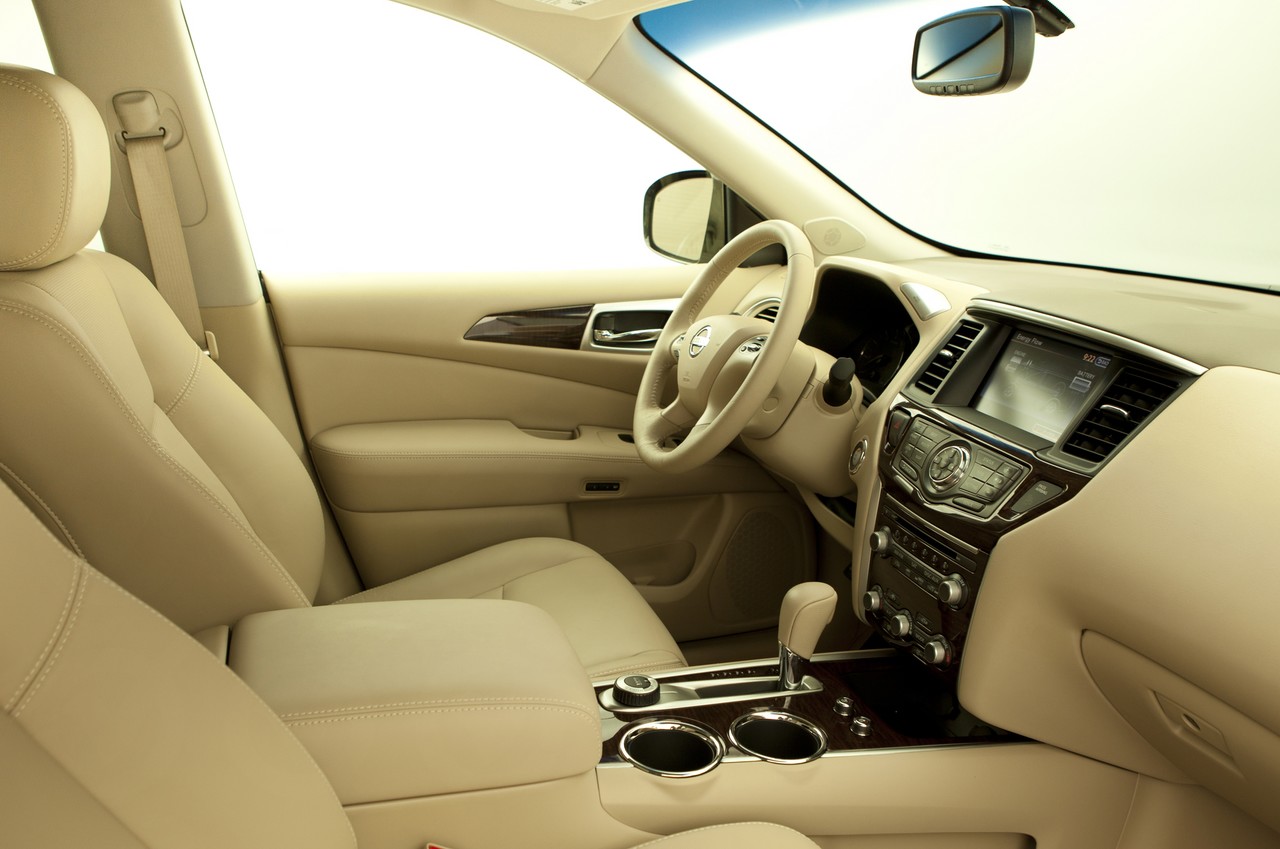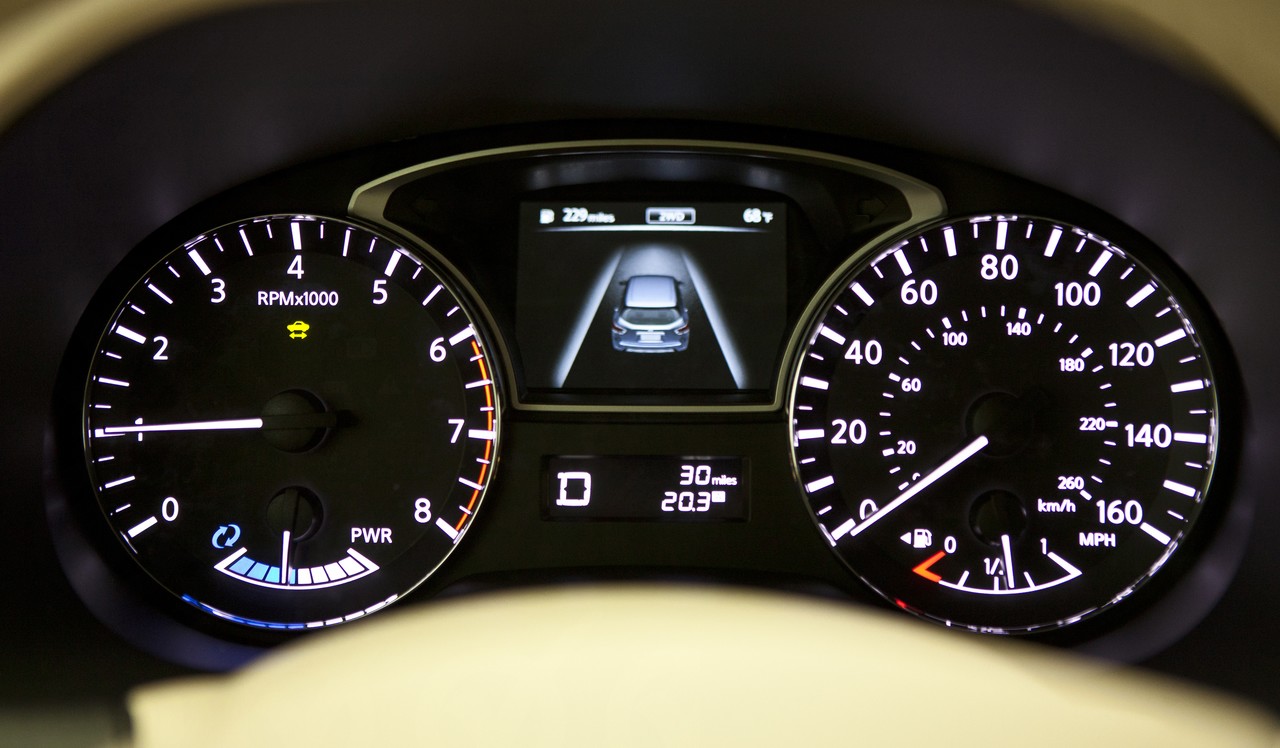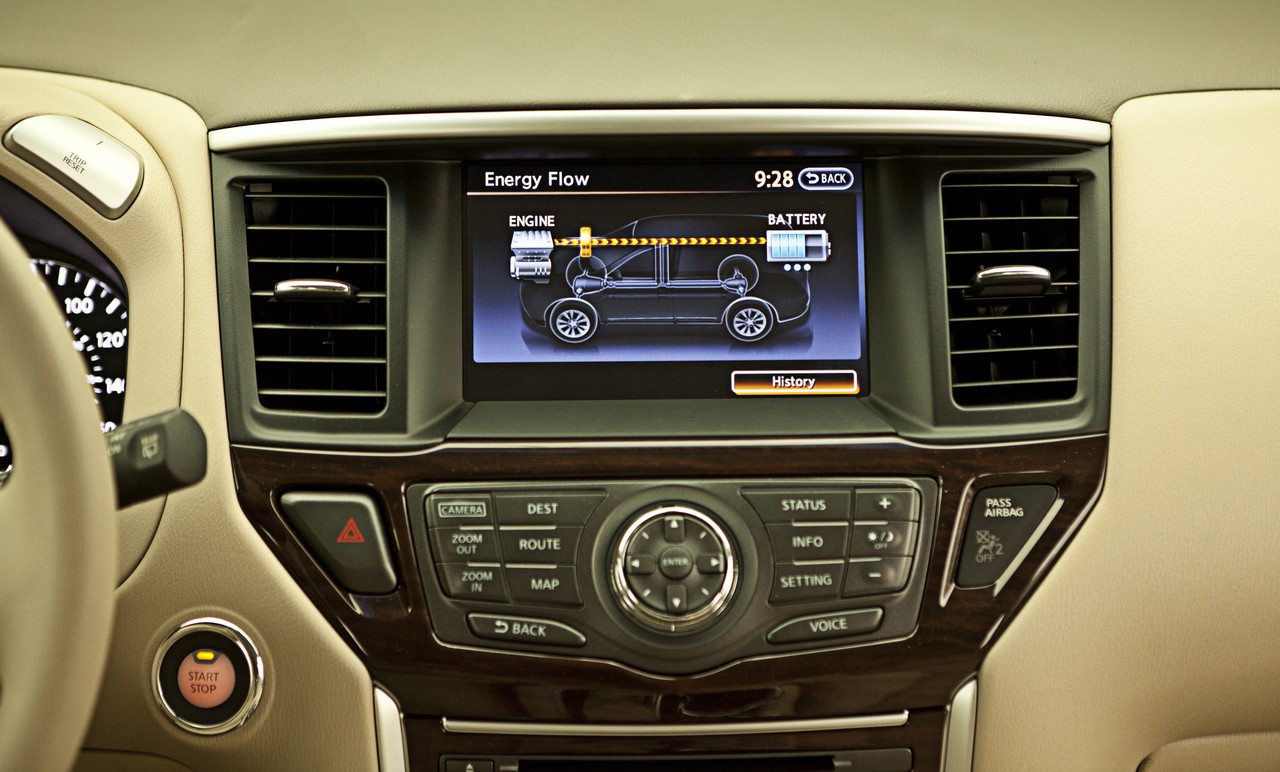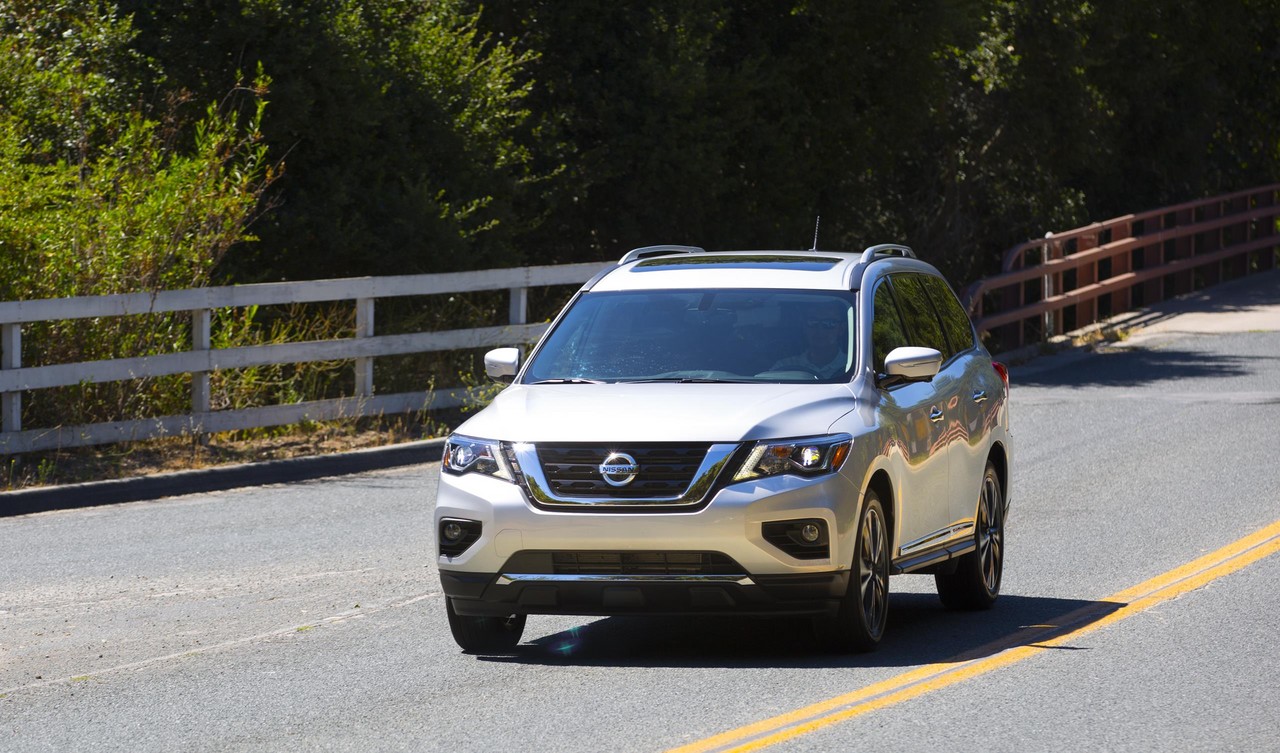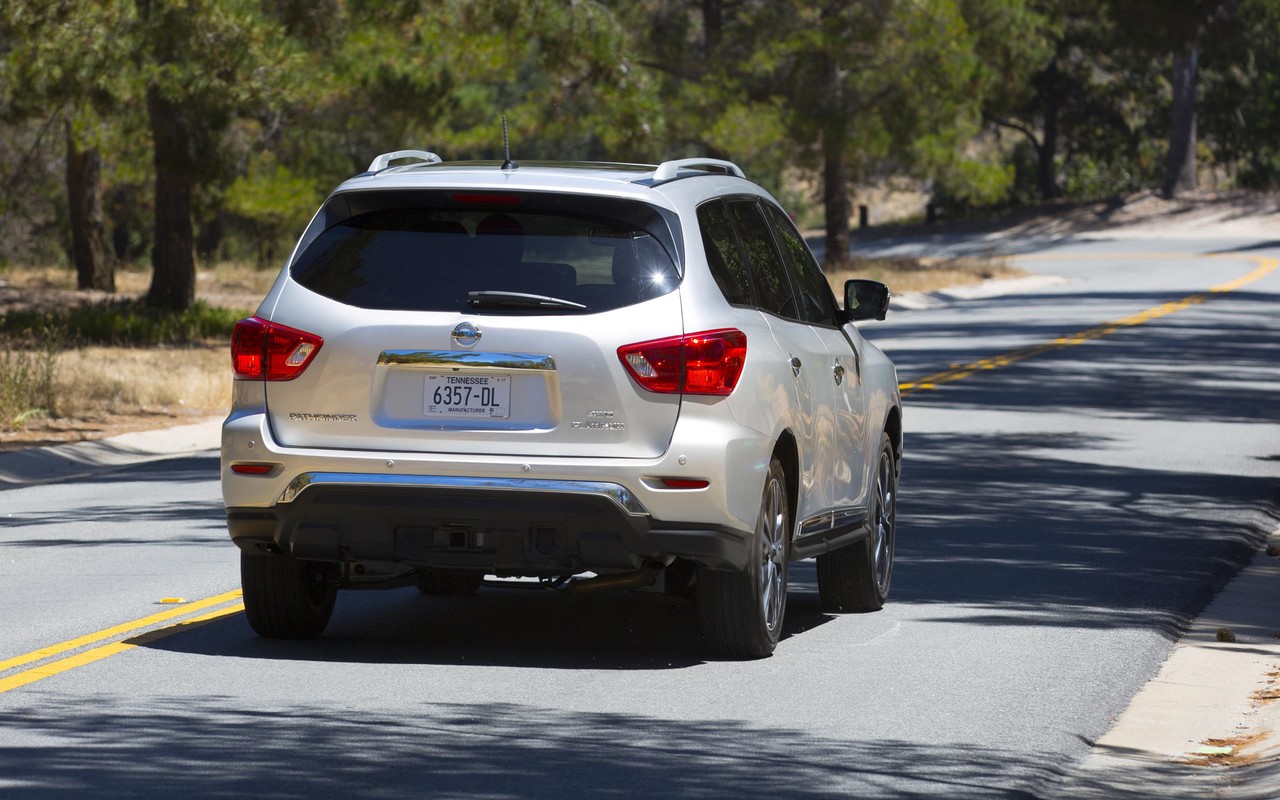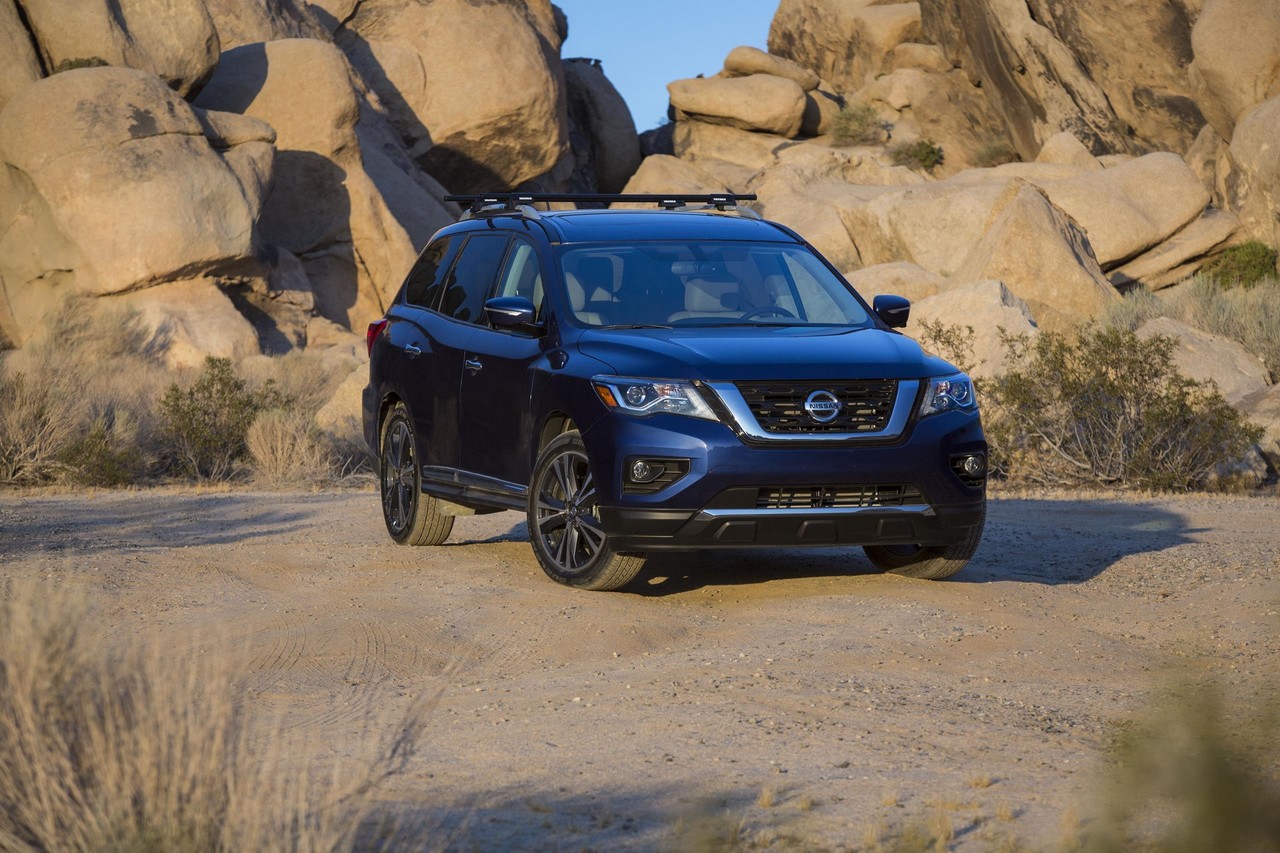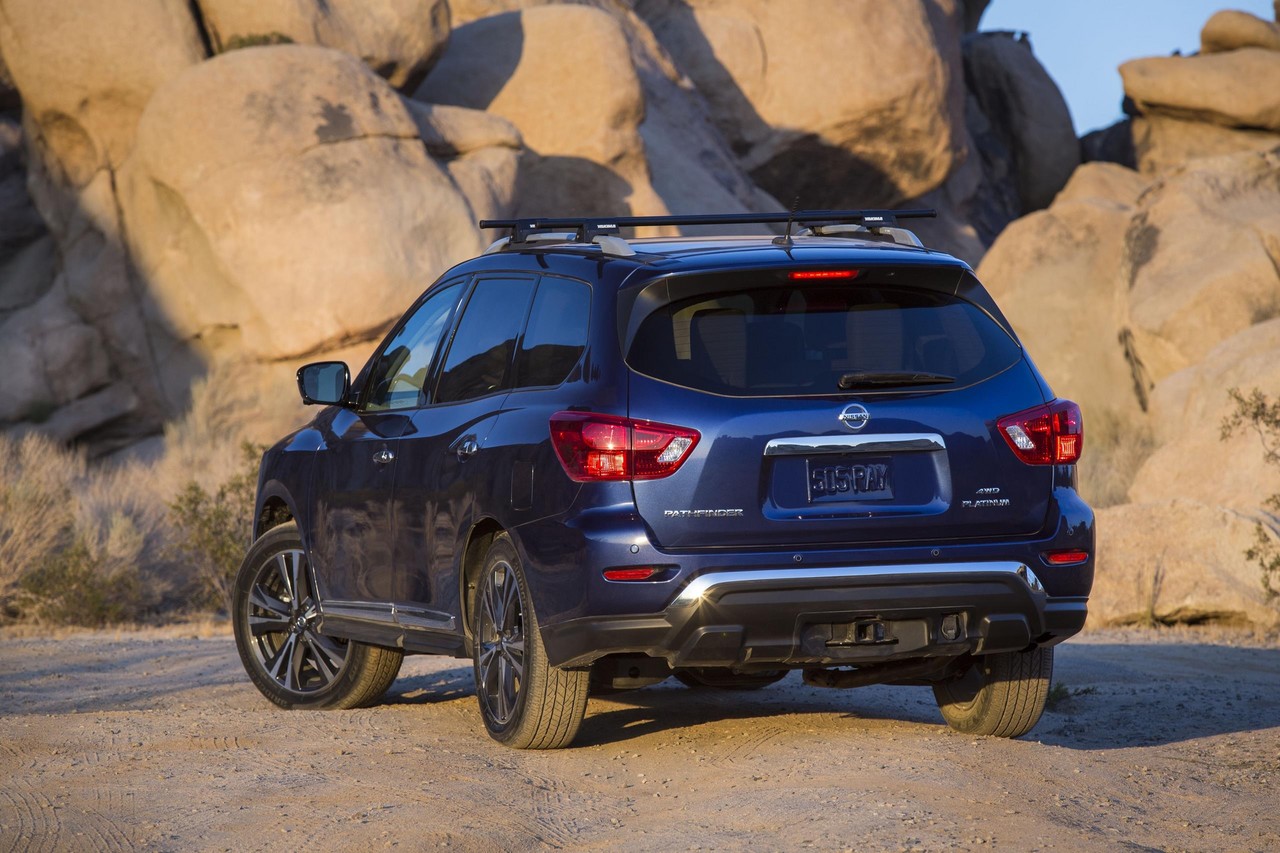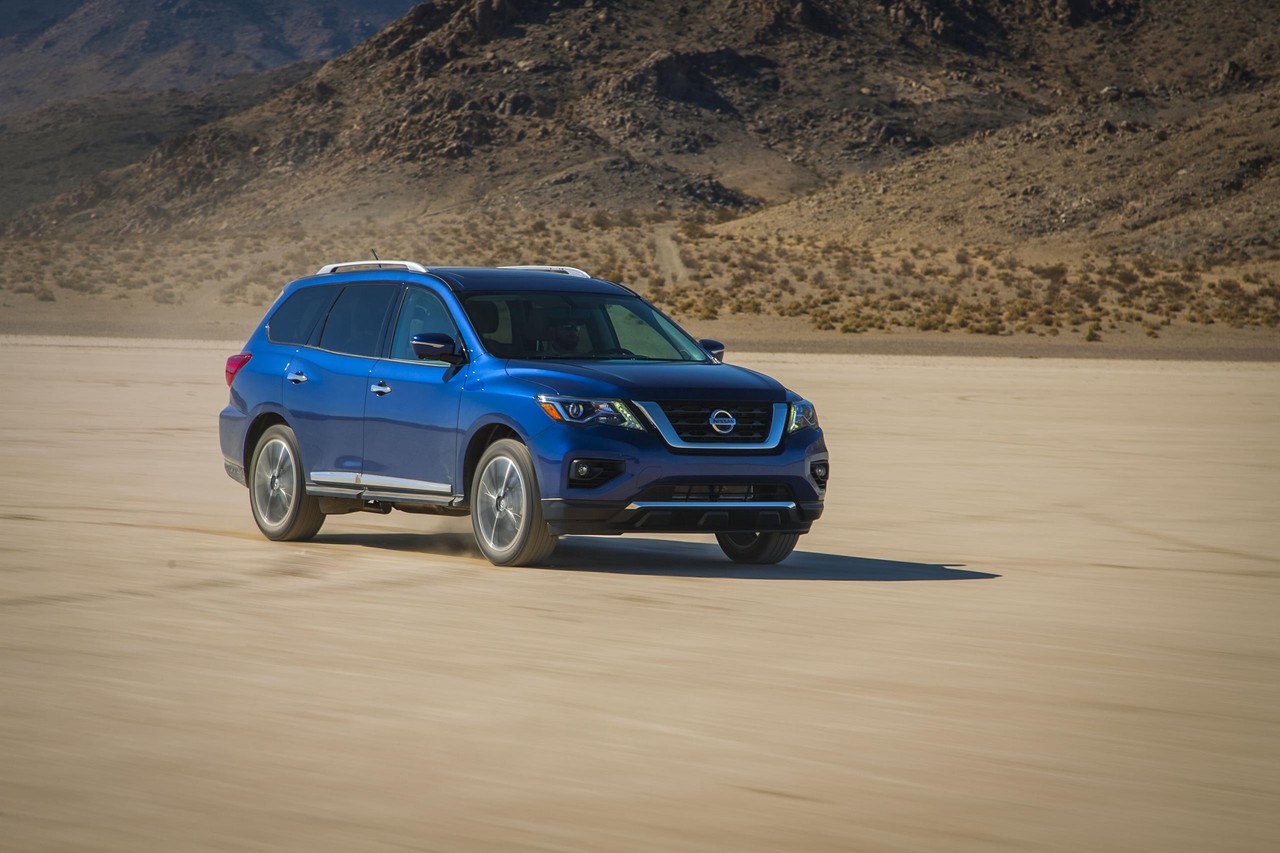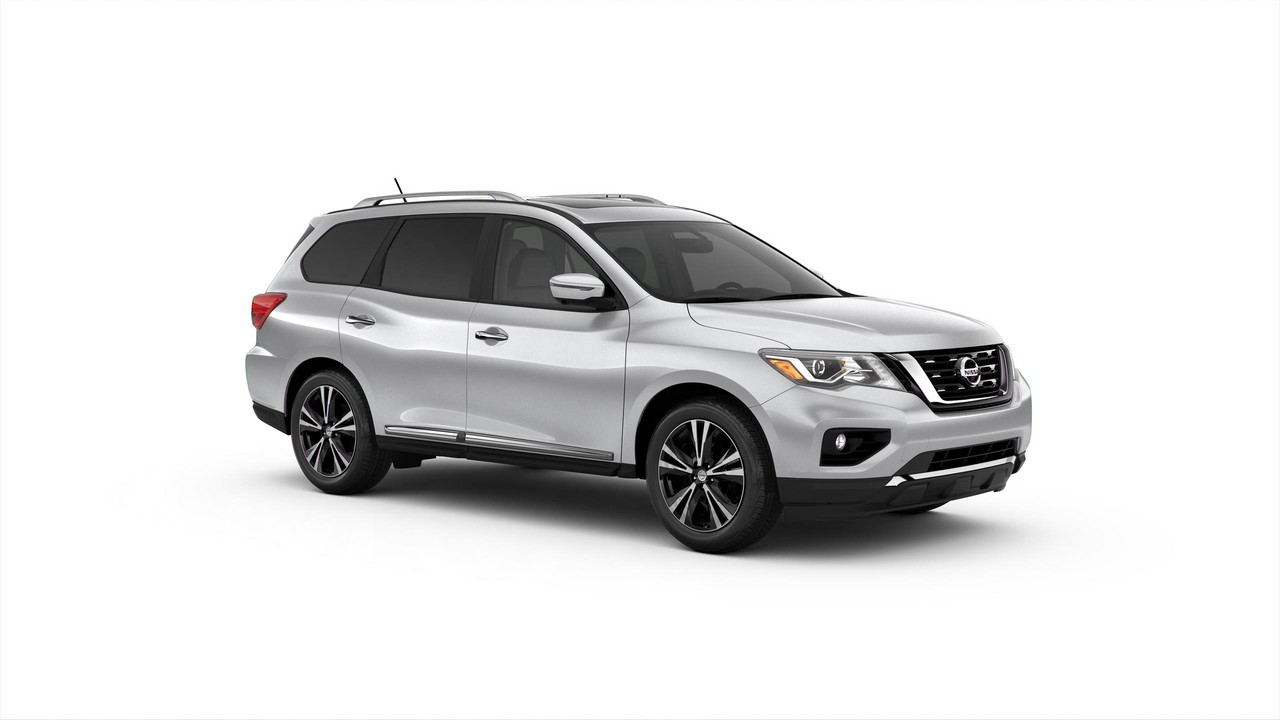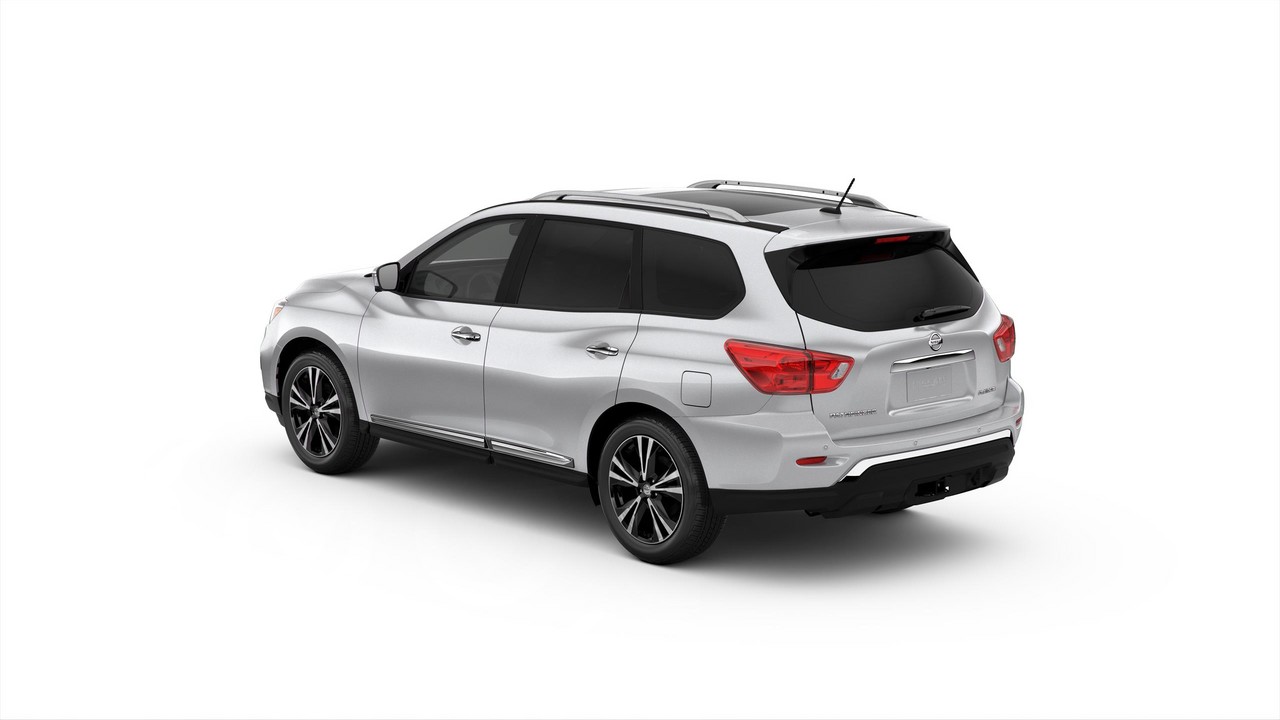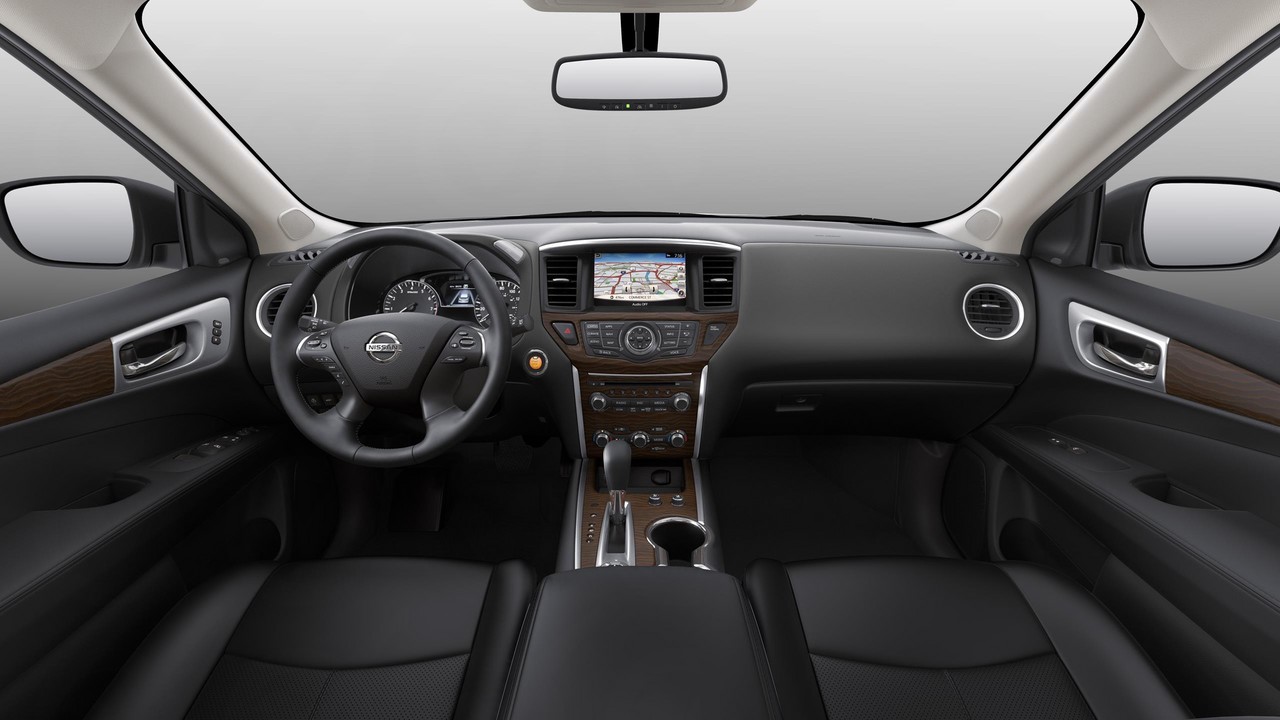
- Responsive hybrid powertrain
- Economical for city driving
- Spacious and versatile interior
- Well-weighted steering
- On 18-inch wheels, comfortable ride
- On 20-inch wheels, suspension lacks low-speed compliance
- Body roll when cornering
- Weight blunts agility
- Foot-operated park brake
- High retail price (relative to rivals) and potential depreciation
Review: Nissan R52.I Pathfinder Hybrid (2014-16)
Overview
Released in September 2014, the Nissan R52 Series I (R52.I) Pathfinder Hybrid was a seven-seat SUV that was available in front- and all-wheel drive models. Manufactured in Tennessee, USA, the Pathfinder Hybrid was powered by a 2.5-litre supercharged petrol engine and a 15 kW electric motor which operated in conjunction to provide similar performance to the non-hybrid Nissan R52 Pathfinder .
QR25DER engine and electric motor
Specifically, the Pathfinder Hybrid powertrain consisted of:
- A supercharged 2.5-litre QR25DER engine which had an aluminium block and cylinder head, double overhead camshafts (chain-driven), four valves per cylinder, variable intake valve timing, variable induction system, counter-rotating balance shafts, Electric Active Control Mounts (E-ACM) to reduce engine vibration and a compression ratio of 9.1:1;
- A 15 kW electric motor which was positioned between the petrol engine and the continuously variable transmission (CVT). The electric motor drew its power from a 144 volt lithium-ion battery (fitted under the third row seat), but could also act as a generator when the vehicle was decelerating by receiving energy from the CVT and using it to recharge the battery (i.e. regenerative braking); and,
- Nissan’s ‘Intelligent Dual Clutch System’ which managed power from the petrol and electric motors. While one clutch was installed between the petrol engine and the electric motor, the other was within the CVT.
Over the combined ADR 81/02 test cycle, the front- and all-wheel drive Pathfinder Hybrids had fuel consumption of 8.4 and 8.5 litres per 100 km, respectively (using 91RON petrol).
AWD systemThe Nissan R52 Pathfinder Hybrid was available with Nissan’s ‘All Mode 4×4-i’ system which utilised an electronically-controlled coupling. The system has three drive modes which can be selected via a rotary knob on the centre console:
Dimensions and suspensionLike the Nissan R52 Pathfinder on which it was based, the R52 Pathfinder Hybrid will be 5008 mm long, 1960 mm wide, 1768 mm tall and have a 2900 mm long wheelbase; its drag coefficient is 0.34 Cd. Braked towing capacity was 1650 kg. The R52 Pathfinder Hybrid had MacPherson strut front suspension and independent, multi-link rear suspension. Safety equipmentStandard safety equipment for the Nissan R52 Pathfinder Hybrid included dual front airbags, front side airbags, full-length curtain airbags, ABS, electronic brake force distribution, brake assist, electronic stability control, traction control and front seatbelts with pretensioners and load limiters. ANCAP crash testingIn ANCAP crash testing , the non-hybrid R52 Pathfinder received a five star adult occupant protection rating with a score of 35.73 out of 37. In the offset crash test, occupant protection was generally rated as good, though protection of the driver’s thighs and lower right leg were rated as acceptable (i.e. a slight risk of serious injury). Maximum points, however, were awarded in the side impact and pole tests. Features: Pathfinder Hybrid ST, ST-L and TiStandard features for the Pathfinder Hybrid were the same as its non-hybrid counterpart. As such, standard features for the Pathfinder Hybrid ST included 18-inch alloy wheels with 235/65 R18 tyres, a six speaker sound system with a CD/DVD player, MP3-compatibility, auxiliary inputs (3.5mm/USB/iPod/RCA) 2GB hard drive and a seven-inch colour display, three-zone climate control air conditioning, an eight-way power adjustable driver’s seat, cruise control, steering wheel audio controls, a rear view camera with path prediction, rear parking sensors, Bluetooth mobile phone connectivity, a leather-accented steering wheel and gearshift knob, push-button start, 60/40 split, folding and sliding second row seats, 50/50 split and flat folding third row seats, remote central locking with proximity key, power windows and mirrors, a tilt adjustable steering column, four 12 volt power outlets, tyre pressure monitoring, rear privacy glass, roof rails, a trip computer and an immobiliser. The Pathfinder Hybrid ST-L was further equipped with heated front seats, leather accented seat and door trim, power lumbar adjustment for the driver’s seat, a power adjustable front passenger seat, heated door mirrors, front fog lights, a power adjustable steering column (tilt only), an electrochromatic rear view mirror, front sunroof with manual sunshade and a panoramic glass roof with power sunshade. The Pathfinder Hybrid Ti was distinguished by its 20-inch alloy wheels with 235/55 R20 tyres, a thirteen speaker Bose sound system with a 9GB hard drive, satellite navigation with an eight-inch display, heated and cooled front seats, Nissan’s ‘Around View Monitor’, dual second row seven-inch DVD monitors, third row auxiliary A/V inputs, driver memory settings (for the driver’s seat, steering column and mirrors) and power-operated tailgate. Related links
Review: Nissan R52.II Pathfinder Hybrid (2016-20)OverviewCommencing production in late 2016 and officially released in Australia in March 2017, the Nissan R52 Series II (R52.II) Pathfinder Hybrid introduced active safety technologies for the ST-L and Ti variants, and revised suspension. Visually, the R52.II Pathfinder Hybrid could be identified by its ‘V-Motion’ grille, headlights with boomerang-shaped LED daytime running lights, more aggressive bonnet, new front bumper and fog lights, door mirrors with integrated indicator lights, and new tail-lights.
| |||||||||||||||||||||||||||||||||||||||||||||||||||||||||||||||||
